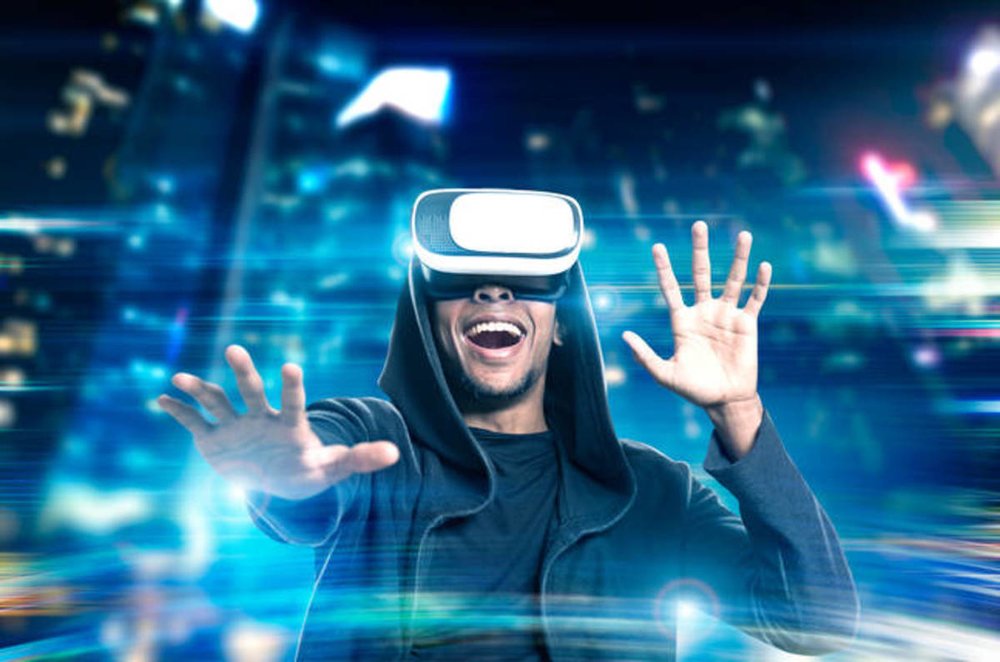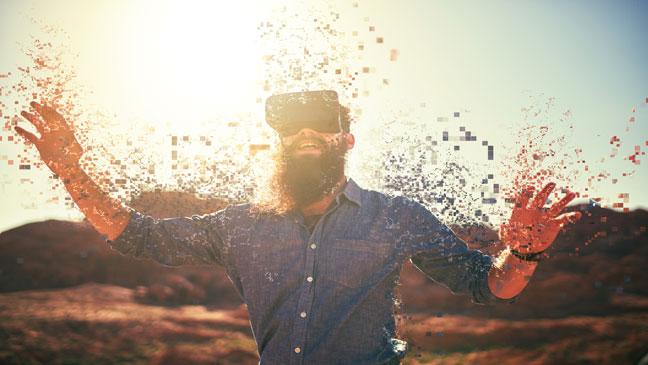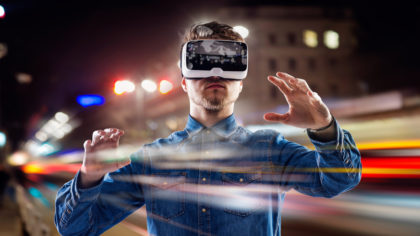CONNECTING THROUGH VR - INTERVIEW WITH SANDRA RODRIGUEZ & AARON WILSON |
|
What seemed impossible in sci-fi movies like The Matrix Trilogy (1999-2003) and Minority Report (2002) may soon be a reality.
Virtual Reality (VR) technology is increasingly making its presence felt in society. Our simple understanding of VR is that it uses special headsets or multi-projected environments to generate a sense of reality in people. Users can ‘look around’ the artificial world and interact with virtual objects.

How will VR change cinema? We find out from two speakers who will be sharing their thoughts on VR at the 28th Singapore International Film Festival’s panel discussion Future of Cinema: Connecting Through VR. The special event will explore how VR is fast delivering information, entertainment and comprehensive experiences to people.
About the speakers

Sandra Rodriguez (SR) is a Canadian filmmaker, creative director (interactive/film) and sociologist of new media technology. As a filmmaker, she has directed, written and produced award winning documentary films, broadcasted and exhibited internationally, before pushing creation into the interactive realm. Today, she heads the Creative Reality Lab at EyeSteelFilm, an Emmy-awarded company based in Montreal.

Born in Australia, Aaron Wilson (AW) has made numerous short films that have screened at more than 100 festivals, and acquired numerous international sales and awards. His short film Feng (Wind) was awarded Best Short Film at the Kuala Lumpur International Film Festival in 2007. In 2013, his first feature film, Canopy, premiered at the Toronto International Film Festival. His recent VR projects include Nowtalgia, an installation piece with the Melbourne International Film Festival, and Passion Kitchens, a VR film project made for the Singapore Tourism Board.
About the panel discussion
Date: 25 November 2017 (Saturday)
Time: 1pm – 3.30pm
Venue: *SCAPE Gallery
Registration: http://sgiff2017-futureofcinema.peatix.com/
Questions and answers!

Q: What exactly is the future of cinema, and when is it happening?
SR: Ha! Now that’s a very good question. The future of cinema is many things. We could say that it is happening now. We could also say it happened yesterday! Cinema, in its diverse forms (and much like any other media) is always evolving.
If one looks back, the very first movies started by offering a simple view of the world – the frère Lumières filmed people stepping out of a factory, a family picnic, people walking in busy streets of Paris. That is just a human reflex. We love to share who we are, what we do. But humans are also born storytellers (and good at it too): we share what we want, what we fear, what we dream of. Every media does this pendulum dance between showing and telling…
For film, this has translated into using the tools we have at hand (a camera, lenses, film, tapes, then digital tools), to figure out what else it could do. Filmmakers of the early ages experimented with montage – what if it could add emotion (Koulechov); and special effects - what if we could simulate dreamlike worlds (Méliès or Alice Guy)? Early fiction films also looked a lot like theater… then evolved to explore new visual grammars and languages. We distinguished styles, genres, visual and narrative languages.
With the development of Internet and Social media, there’s been a similar cross-over, where creators started exploring merging film techniques with interactive narration, game-like design and a complete rethinking of the relationship between the creator, the story and the audience. Many also called this “the future of film”. And we were getting excited! It felt like a new medium entirely – we were reinventing the future of cinema through exploring interactive creations! Of course, some experimentation were more successful than others. Sometimes we also felt we were facing an existential crisis (who is actually watching this stuff? Are we exploring this new medium for nothing?). But after a good 10 years, interactive cinema was growing up and establishing its own language, industry, key players, etc… And then Virtual Reality changed everything. Again…
It’s actually bit of a running joke in the “new media” industry sector. For a good decade, creators and producers have faced “existential crisis”, changing ways to define what we do - exploring interactive cinema, transmedia, cross media, immersive media and now, VR, AR, MR (Mixed reality). Just to stay safe, many speak of XR - extended reality (who knows what will come up next?).
Of course, it can be a bit disorienting. But I think it is above all exhilarating. A new medium is explored, tinkered with; it invites creativity, thinking differently about they way we share stories – what about images, sound, what about moving your body in space? What about smell? What about touch? (I did a very strange experiment just yesterday where I was guided by a voice narrated story, as sensors placed all over my body exposed it to different changes in temperature!). In other words, if we are at the birth of a new medium, creators and producers are called to be pioneers. The future of cinema is the future of how we, humans, decide to share stories about ourselves, to ourselves (or maybe also to robots). I think it is a luminous future.
***
AW: How we create content is constantly changing and evolving, as is the way we consume it. And we’re going to have even more ways to view it because the demand for content is growing. But cinema, as a collective experience, is something that remains. Be it traditional projection in movie theatres, VR, AR or a combination, human beings are still excited by getting out of their homes (away from their screens) and participating in something together. Even if they view something with a VR headset by themselves, there’s a discussion that’s had afterwards with others who viewed the same VR film. I don’t see this collective cinema experience disappearing, just evolving.

Q: How does that change the traditional way filmmakers produce movies, and how people watch movies?
SR: That’s a bit tricky. Let me start with how people “watch” movies. Many developers of digital platforms and recently Virtual Reality try to push this narrative: that new technology radically changes the ways audience consume “movies”. Well, it’s true and untrue…
It’s been a couple of years now. Our increasingly digital world does change where and how people can watch movies – on smaller screens, through streaming, at home, through use of Internet and app based accounts. The new affordances of these digital platform does change the way filmmakers and producers create movies - the obvious examples here being ITunes and Netflix, where digital data about audience behavior and preferences can be quickly gathered and analyzed to create more targeted, personalized productions. But that, in itself, hasn’t killed cinema. The movie theatre experience is transforming, home movie-watching is evolving, the quality of the special effects are now astonishing. But cinema is still a medium. And the fantastic blooming of blockbuster movies industry shows how much its still alive (have you seen Wonderwoman and BladeRunner 2049 recently?).
So we do have more platforms where we can watch movies. Increasingly, audience is also called to participate in stories. But creators, producers and filmmakers still try to share relevant narratives, feelings, and imagination. Maybe it’s just a question of thinking differently about the new technologies at hand. Selling tech usually requires arguing, “it will change everything” (it’s actually a good sales pitch – I have nothing against that). But I rather believe that creators constantly reinvent their craft. At least, that’s how I like to think of my own work. I don’t start from the tech. But the tech does inspire what I think of when sharing or contributing to a story: should I use interaction? Movement? Stereoscopy? Smell? Should it be individual or collective? Sky is the limit.
***
AW: Filmmaking will always come down to creative ideas and, for exhibitors and producers, a way to monetize it. As a filmmaker, the marketplace strongly dictates what sort of films I can try to make. But by exploring new technologies such as VR, I get to experiment a lot more than I can with traditional film right now, and eventually this sort of experimentation will lead to something more financially substantial and sustainable for producers.

Q: Does it make the current filmmaker practices redundant? Why/ why not?
SR: It my opinion, it really doesn’t. And that’s good news. I still enjoy watching movies. Skilled filmmakers are still sought, hired, admired. I don’t think VR should change the way “films” (as in movies) are made. Immersive media and new technologies don’t make filmmaking practices redundant. But… it can expend and/or coexist with new practices (small but important nuance here).
Indeed, new creative platforms such as VR and AR can give way to new forms of immersive experiences. An important note: some people talk of VR films. But that usually only refers to a linear narrative in 360 video (with or without stereoscopy). Describing immersive experiences that are room-scale, in which you can move in space, manipulate or interact with virtual objects, or experiences where mixed reality merges the “real” with virtual worlds”… all of this is really hard to describe as “films”. “Experiences” feels more accurate. And these new languages and grammars do require new practices, and techniques.
But both can go hand in hand. After all, I am currently heading the “Creative Reality Lab” at EyeSteelFilm, a Montreal film production company. My role is not to erase film, but to explore new ways of experimenting “the real”. Recently for instance, I have been working as creative director on an immersive media experience (room-scale VR) called MANIC_VR. The experience is a standalone, and it accompanies a feature documentary film by Kalina Bertin, also called MANIC. Both projects require different sets of storytelling skills. Both target different reactions within an audience. But one doesn’t kill the other. You could see the film and do the VR experience. And if both spaces are used to share differently about the real lives of Kalina’s sister and her brother, both suffering from Manic Depression, they don’t tell the same story. One lets the siblings “speak” and show what their daily lives looks like. With VR we rather explore the sensuous imagination of bipolar disorder, which can be at times frightening, but also poetic and mesmerizing. These are feelings harder to trigger through films (although animation could probably also reach similar goals). So having a dual approach to a story is not always redundant – it can be complementary too!
***
AW: Not at all, and why should it? The heart and soul of filmmaking has always been about the storytelling and a strong aesthetic, not the medium or technology. It’s about the voice behind the camera, using picture and sound to evoke feelings in audiences. In fact it’s the structure, process and discipline of filmmaking that has informed me most in moving forward into the VR space.
On my recent VR project (‘Passion Kitchens’), I had parameters on how I could use the camera and 360 space, which forced me to reduce and simplify my approach. It meant carefully designing the filming space and movement of people within that world, to distill what I wanted audiences to sense and feel.

Q: For people with tech phobia, how can they embrace VR/ AR and the possibilities that come with it?
SR: Easy: they can do so in two simple steps. 1) Forget about the tech. It’s not about technology. It’s about what is conveyed, shared, experienced. 2) Remember your inner child. Do you remember being told a story as a child? Say a story about a pirate, his pet monkey and a boat. Do you remember how you imagined the story? Did you see a screen in your mind? Or did you rather hear/see/smell/play/embody characters… (and decide the pet monkey was your own). I think VR/AR do feel like they allow creators to tap into this kid-like imagination. And that’s what is so wonderful about it.
For young (or young at heart) filmmakers trying to merge to immersive media and unsure about what they should think of… I usually give this advice. Forget about the output – the frame – think about what you feel and see when you think of this story… write it down if you want. Shuffle it. And once you choose the types of senses you want to stimulate, the types of feelings you want to convey, and the narrative arc that you’re following, then please allow your inner kid to toy with it, disrupt it, and come up with new ways to explore a story. The human imagination has not limit. Why try to tie it down with rules?
Don’t embrace technology – embrace your inner child (they love being embraced or getting high fives too!).
***
AW: The storytelling language of VR and AR is still being written, which means filmmakers are still experimenting with how to use new narrative space and better understand and work with sensory conflict. When a viewer puts on a headset, they might not see a body to connect with in the VR space, and it’s understandable that they might feel disorientated to begin with. But just like people used to freak out about trains coming at them in the early days of cinema, audiences will adapt and get used to the medium.
For me, the power of VR lies in its emotional impact combined with the ability of the viewer to decide their own unique experience in the 360o space. If I can strongly affect audience emotions while empowering them to explore rather than being shown, then their experience, rather than problems adapting to with the medium, is what they’ll remember long after leaving the VR space.
Q: Tell us why you’re the perfect ambassador to advocate the future of cinema!
SR: First and foremost, because I like to describe myself as a “friend of future” (I think this is actually my Pinterest self-description).
I don’t know about being the “perfect” ambassador. But I do love being a pioneer. Exploring a new medium needs different types of creative minds: it needs people to clear a field, innovate, it needs people to plant and harvest, and it needs funders to encourage its growth. Multidisciplinary here is key. Among the multiple things I do, I am also teaching a first VR and Immersive Media Production class at the Massachusetts Institute of Technology (MIT). I get students from very diverse backgrounds (computer science, game design, architecture, writing). And I like to tell students that a good VR team always needs diversity. It needs poets, pirates, and pioneers (and maybe some plumbers). For creators, I think it’s not about getting caught up in the racing developments of a new technology. But rather, to constantly challenge the way we share stories, feelings, and collective experiences. And in doing so, we create a tango, a push, pull, swirling dance between story and technology.
There’s a very interesting quote that a young filmmaker shared with me at last Cannes Film Festival. I was invited to give a masterclass on the “Art of Storytelling for a Digital Age” at the Short Corner – so mostly to a crowd of new, emergent filmmakers. And this young woman came up to me and said: “have you ever heard the following quote from Buckminster Fuller? We are called to be architects of the future, not its victims”. She was perceptive, because I totally love this quote! (I should get it framed). Creators of tomorrow will be architects, clowns, poets and kids. We collectively lay the ground for new experiences. And the more diverse the voices present, the better. All are welcomed in this new story sharing world.
***
AW: I don’t feel I’m any such ambassador, but I am a filmmaker who is excited about exploring new mediums to engage audiences in different and innovative ways. A few years ago I made a feature film (‘Canopy’) that was set almost entirely in the Singapore jungle, and the opportunity to mix our sound in Dolby Atmos meant I could think differently about how to better immerse audience in the world of the story.
Similarly, VR and AR are refreshing because they’re making us think differently, which is a wonderful thing for a creative person. What’s exciting is the scope to create multimedia art installations and cinema that’s deeply emotional and physically immersive.
By John Li
 |
|
|
